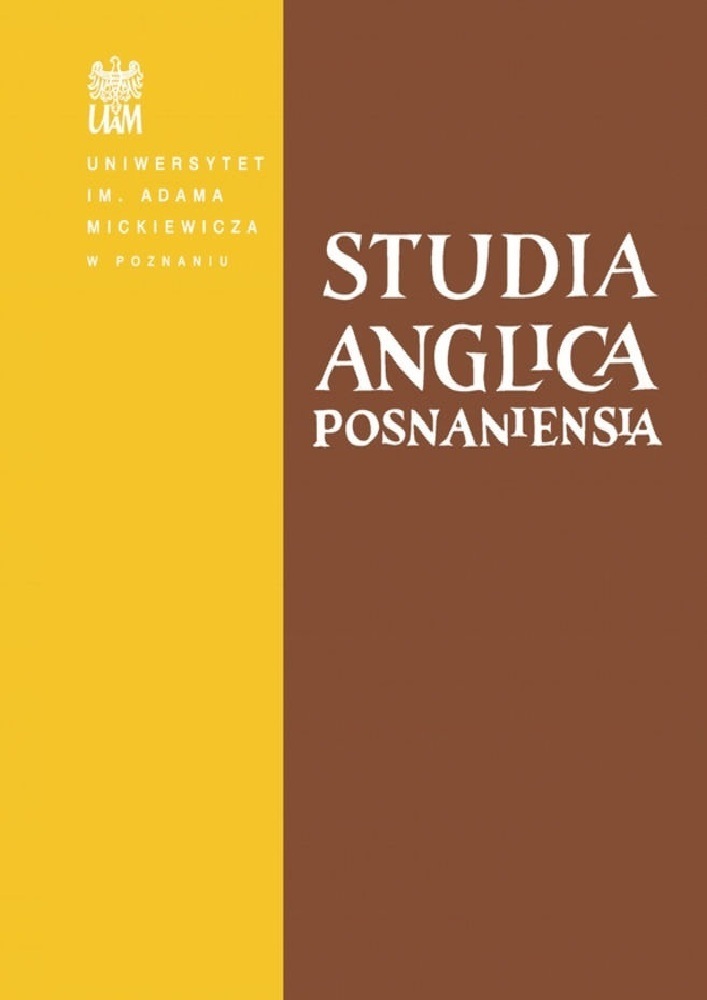Abstract
In Lord Jim Marlow functions not only as a narrator who spins the yarn about the morally problematic case of the young sailor, but also as an interpreter who struggles to register impressions as faithfully as possible thus translating the visual into the discursive. Marlow’s double function establishes the novel as a text about the search to understand and to acquire reliable knowledge about Jim and his dilemma. Levin’s distinction of the two styles of vision, the assertoric gaze and the aletheic gaze, offers a neat conceptualization for Marlow’s visual practices which affect his interpretation of Jim. Levin defines the assertoric gaze as a fixed stare which involves the hegemony of a single standpoint, whereas the aletheic gaze, decentred and subversive, cherishes ambiguity and tends to roam about to accommodate multiple points of view. Levin relates this distinction to the two concepts of truth that Heidegger examines in his critique of the metaphysics of presence: truth as proposition, correspondence, or correctness and truth as aletheia or unconcealment as well as the two types of discourse, the hermeneutical discourse of poetizing and the discourse of statements. If Plato and Descartes defined truth and knowledge in terms of a total visibility, Heidegger insists that the path to truth involves confronting shadows and recognizing that they are necessary for the disclosure of being. Within this philosophical framework it is possible to reassess both Marlow’s failure to form an unequivocal explanation of Jim and his growing epistemological scepticism as a departure from the correspondence theory of truth. The encounter with Jim brings Marlow to interrogate his own strategies of grasping the truth and subverts the focus on light as its visual equivalent.
References
Conrad, Joseph. 1923a. Lord Jim. (The Uniform Edition.) London: Dent.
Conrad, Joseph. 1923b. The Nigger of the “Narcissus”. (The Uniform Edition.) London: Dent.
Conrad, Joseph. 1983. The collected letters. Vol. 1. Edited by Frederick R. Karl & Laurence Davies. Cambridge: Cambridge University Press.
Acheraïou, Amar. 2009. Joseph Conrad and the reader. Questioning modern theories of narrative and readership. New York, NY: Palgrave Macmillan.
Armstrong, Paul B. 1987. The challenge of bewilderment. Understanding and representation in James, Conrad, and Ford. Ithaca, NY: Cornell University Press.
Berthoud, Jacques. 1978. Joseph Conrad. The major phase. Cambridge: Cambridge University Press.
Cox, C. B. 1974. Joseph Conrad: The modern imagination. London: Dent & Sons.
Daleski, Herman M. 1977. Joseph Conrad. The way of dispossession. London: Faber & Faber.
Dauncey, Sarah. 2011. “Something else besides”: Uttering the unutterable in Lord Jim. Conradiana 43.1. 23–38. DOI: 10.1353/cnd.2011.0018
Faris, Wendy B. 1989. The “dehumanization” of the arts: J.M.W. Turner, Joseph Conrad, and the advent of modernism. Comparative Literature 41.4. 305–326. DOI: 10.2307/1770721
Greaney, Michael. 2004. Conrad, language, and narrative. Cambridge: Cambridge University Press. DOI: 10.1017/CBO9780511485107
Guerard, Albert J. 1962. Conrad the novelist. Cambridge, MA: Harvard University Press.
Gurko, Leo. 1962. Joseph Conrad: Giant in exile. New York, NY: Macmillan.
Hannah, Daniel. 2008. “Under a cloud”: Silence, identity, and interpretation in Lord Jim. Conradiana 40.1. 39–59. DOI: 10.1353/cnd.0.0004
Hawthorn, Jeremy. 1979. Joseph Conrad: Language and fictional self-consciousness. London: Edward Arnold.
Hay, Eloise Knapp. 1976. Impressionism limited. In Norman Sherry (ed.), Joseph Conrad. A commemoration. Papers from the 1974 international conference on Conrad, London & Basingstoke: Macmillan. 54–64.
Jameson, Fredric. 1991. Postmodernism, or the cultural logic of late capitalism. Durham, NC: Duke University Press.
Jay, Martin. 1994. Downcast eyes: The denigration of vision in twentieth-century French thought. Berkeley & Los Angeles, CA: University of California Press.
Kirby, John S. 2001. Shadows on the cave wall: Platonic imagery in Lord Jim. Interpretation 28(3). 219–243.
Levin, David Michael. 1988. The opening of vision. Nihilism and the postmodern situation. New York, NY & London: Routledge.
Lothe, Jakob. 1991. Conrad’s narrative method. Oxford: Clarendon Press.
Moser, Thomas. 1957. Joseph Conrad. Achievement and decline. Cambridge, MA: Harvard University Press.
Najder, Zdzisław. 1984. Joseph Conrad: A chronicle. New Brunswick, NJ: Rutgers University Press.
Newell, Kenneth B. 2011. Conrad’s destructive element: The metaphysical world-view unifying Lord Jim. Newcastle upon Tyne: Cambridge Scholars Publishing.
Peters, John G. 2004. Conrad and impressionism. Cambridge: Cambridge University Press. DOI: 10.1017/CBO9780511485244
Pettersson, Torsten. 1982. Consciousness and time: A study in the philosophy and narrative technique of Joseph Conrad. Åbo: Åbo Akademii.
Ressler, Steve. 1988. Joseph Conrad. Consciousness and integrity. New York, NY: New York University Press.
Roussel, Royal. 1971. The metaphysics of darkness. A study in the unity and development of Conrad’s fiction. Baltimore, MD: Johns Hopkins Press.
Sanchez, Reuben. 2011. Conrad’s “serried circle of facts” in Lord Jim. Conradiana 43.1. 61–83. DOI: 10.1353/cnd.2011.0022
Schwarz, Daniel R. 1980. Conrad. Almayer’s Folly to Under Western Eyes. Ithaca, NY: Cornell University Press.
Seeley, Tracy. 1992. Conrad’s modernist romance: Lord Jim. ELH 59.2. 495–511.
Tanner, Tony. 1963. Conrad: Lord Jim. London: Edward Arnold.
Wake, Paul. 2007. Conrad’s Marlow narrative and death in “Youth”, Heart of Darkness, Lord Jim and Chance. Manchester & New York, NY: Manchester University Press.
Watt, Ian. 1980. Conrad in the nineteenth century. London: Chatto & Windus.
Watts, Cedric. 1993. A preface to Conrad. London: Longman.
Wollaeger, Mark A. 1990. Joseph Conrad and the fictions of skepticism. Stanford, CA: Stanford University Press.
